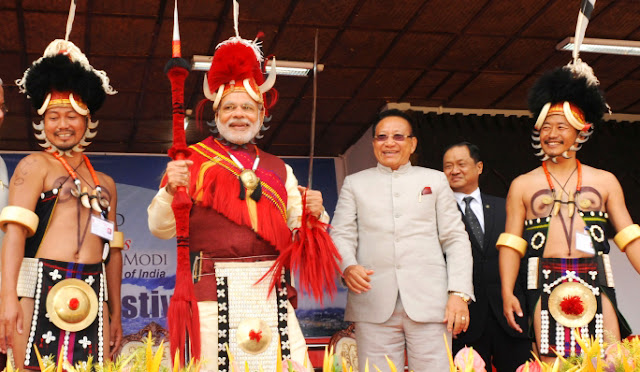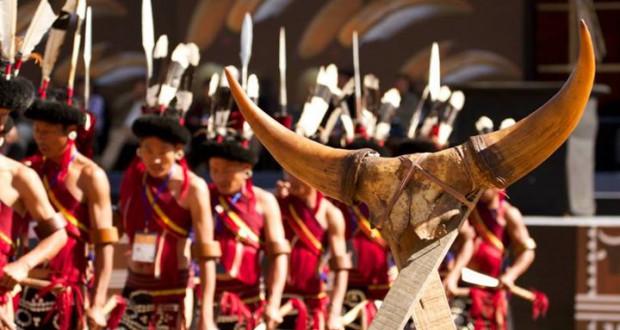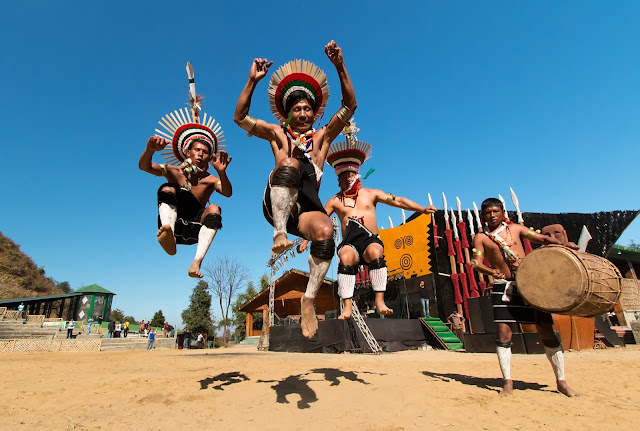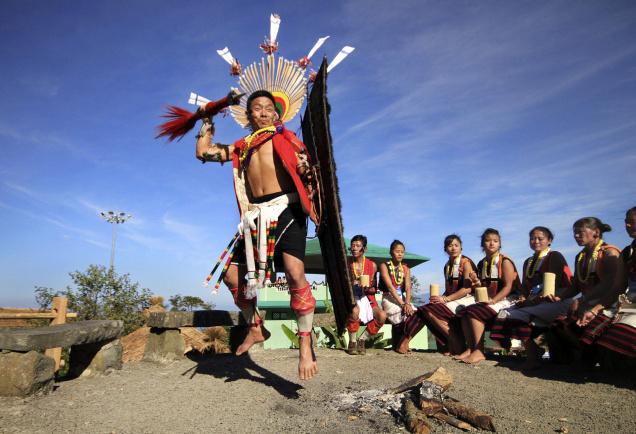With a view to encourage
inter-tribal cultural interaction and to bring together the festivals of the
various tribes under one umbrella, the Government of Nagaland has introduced
this one-of-a-kind festival that goes by the name the Hornbill festival, where
one can see a mélange of Naga cultural displays at one place. Organized by the
State Directorate of Tourism every year between December 1 and 5 in the capital
city of Kohima, the festival is intended to revive, protect and preserve the
richness and uniqueness of the Naga heritage and attract tourists. The
festival, in a way, is also a tribute to the hornbill, a local bird most
admired by the Naga people for its qualities of alertness and grandeur.
There are as many as 16 major
tribes and many sub-tribes in the State that have their own ways of maintaining
their distinctive cultural traditions and customs. The tribes try to popularize
their cultures through various forms of performing arts, which are an integral
part of all Naga festivals, as much as it is during the Hornbill Festival. Each
of the tribal communities that dwell in the hills can be distinguished by the colorful
and intricately designed costumes, jewellery and beads that its members wear.
The traditional ceremonial attire of each tribe is different from that of the
other. There are the multi-coloured spears and daos decorated with dyed goat's
hair, the headgear made of finely woven bamboo interlaced with orchid stems and
adorned with boar's teeth and hornbill's feathers, and ivory armlets.
The Nagas are admired for their
rich repertory of folk dances and songs which is quite evident from the way the
festival is celebrated. In spite of the tremendous advance of modernity into
their lives, the Naga people have a penchant for vibrant dances and songs
praising the brave deeds of ancient warriors and folk heroes, love songs that immortalize
tragic love stories, gospel songs and folk tunes.
The Hornbill festival mainly
revolves around agriculture, it being the mainstay of the economy. Over 85 per
cent of the population of Nagaland is directly dependent on agriculture and
lives in the 1,000-odd villages situated on hilltops or slopes overlooking
verdant valleys. In this blissful setting, Nagas enjoy nature with a rare gusto
that visitors to the State look at with awe and admiration. In most of these
places agriculture consists of a single crop. Although some religious and
spiritual sentiments are inter-woven into secular rites and rituals, the
predominant theme of the festivals is the offering of prayers to a supreme
being, which has different names in different Naga dialects.
At these
festivals, the gods are propitiated with sacrifices by the head of the village,
for a bountiful harvest, either before sowing or on the eve of the harvest. In
fact, agricultural work and religion are so interwoven in Naga society that it
is difficult to describe the festivals independent of the processes of
agriculture.



















0 comments :
Post a Comment